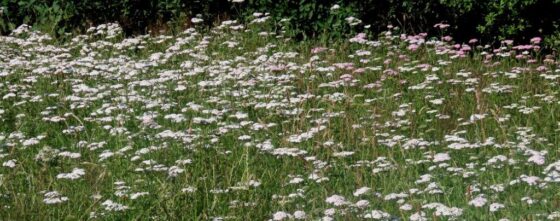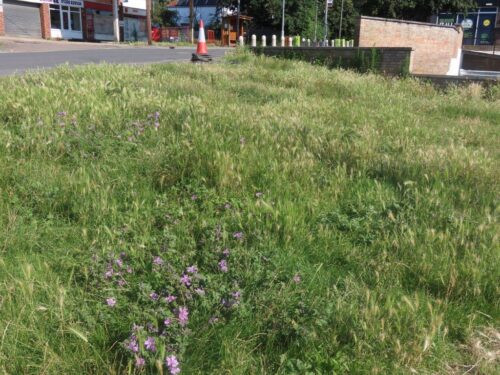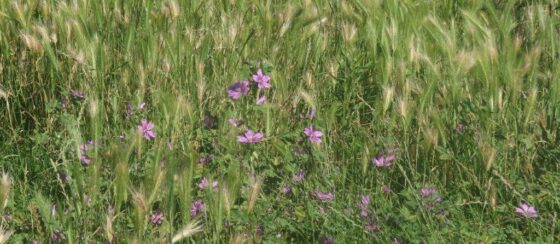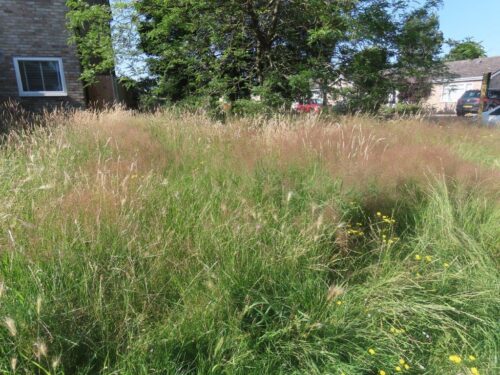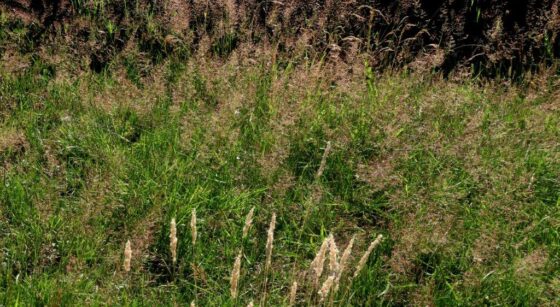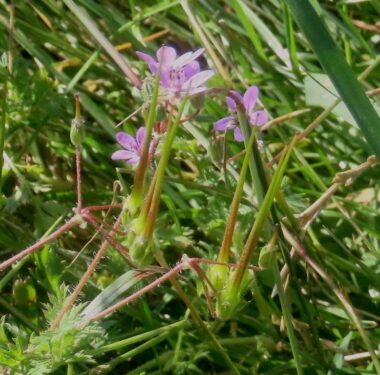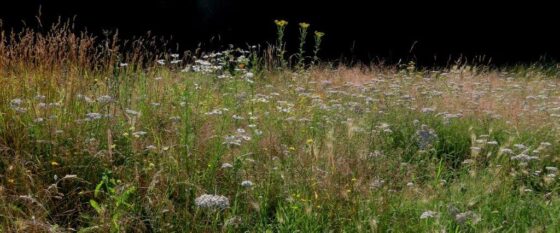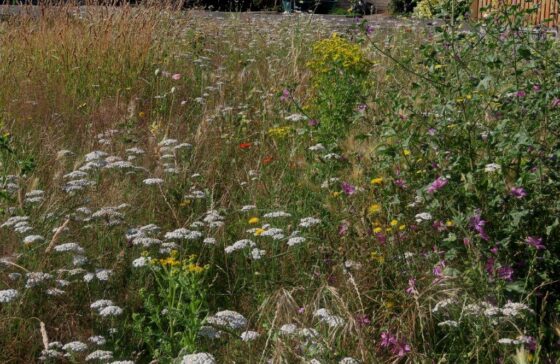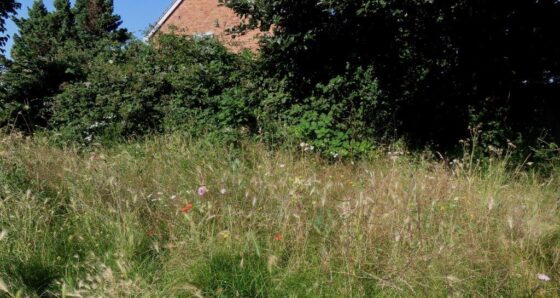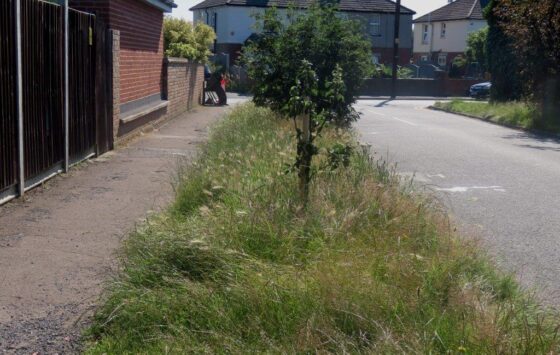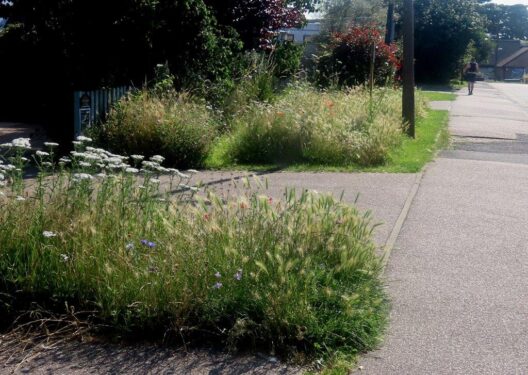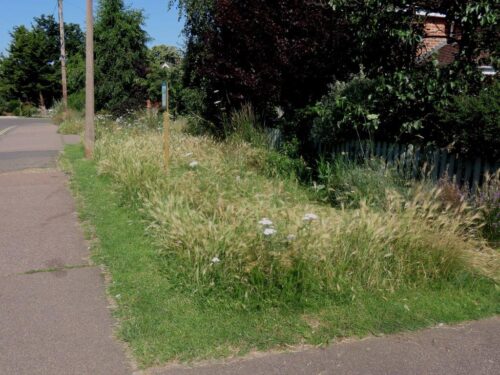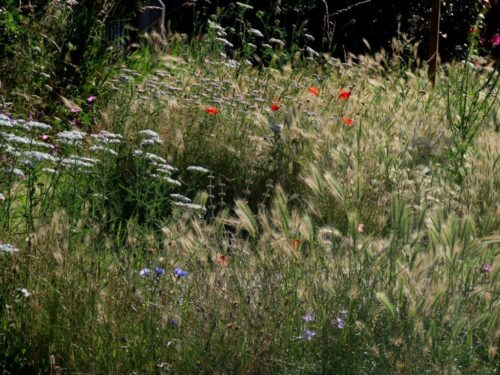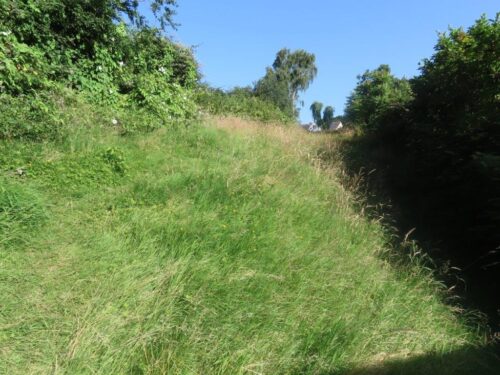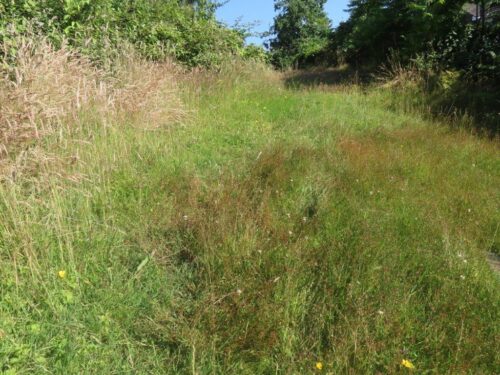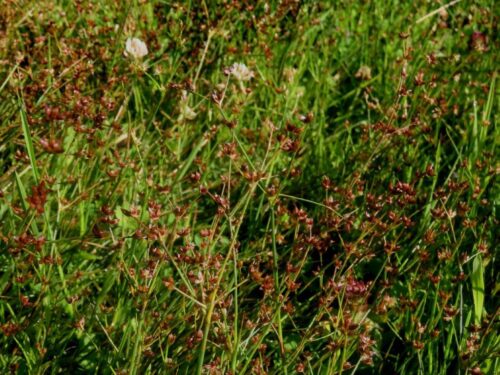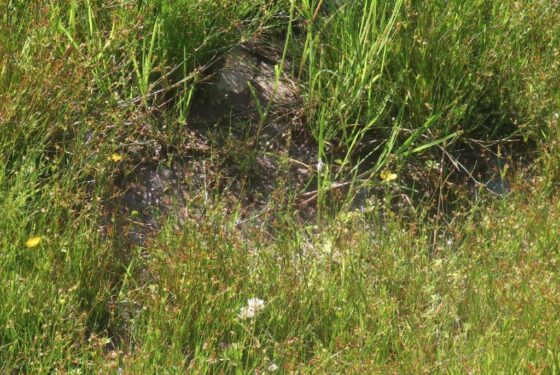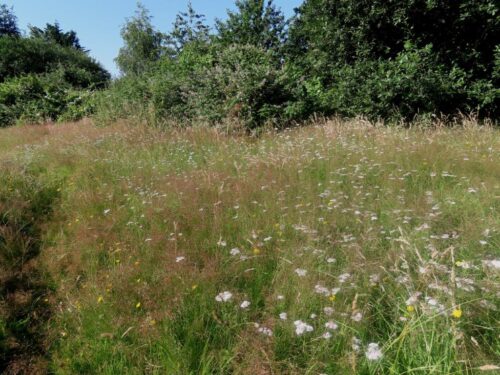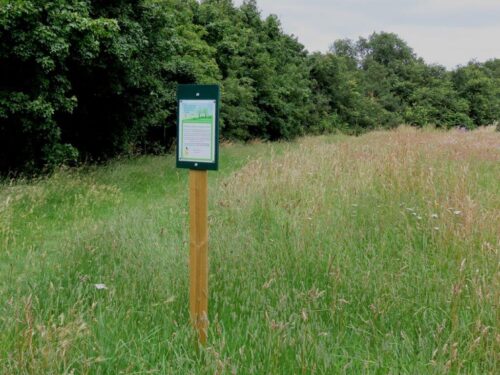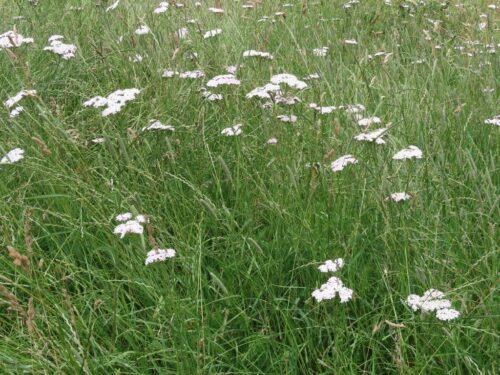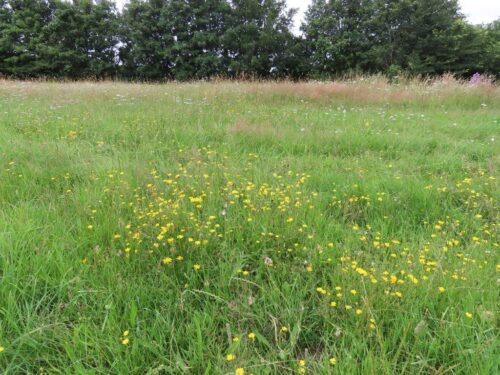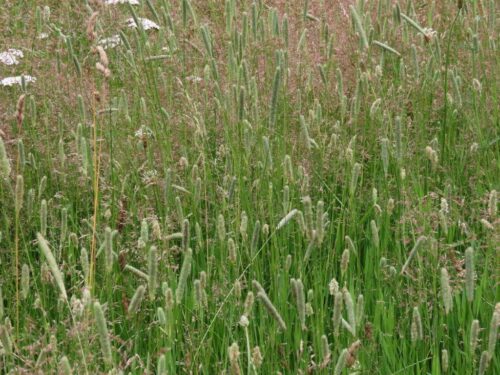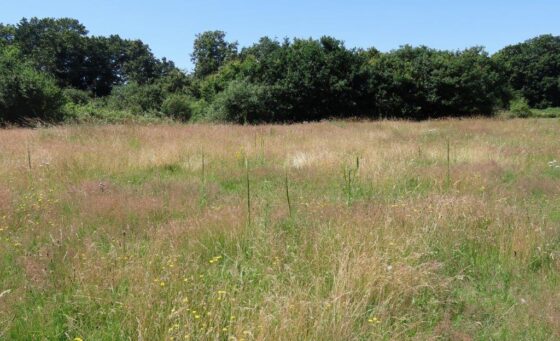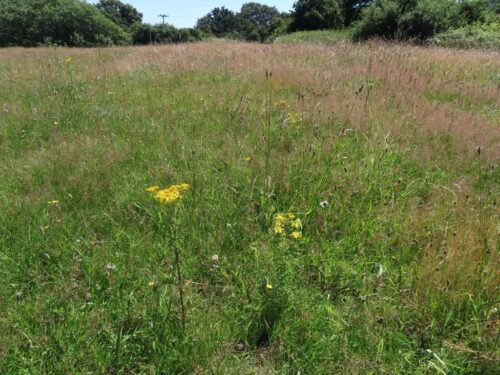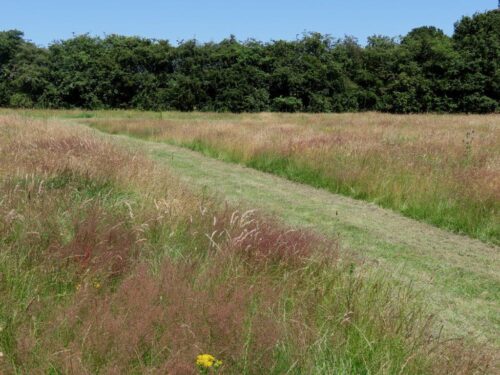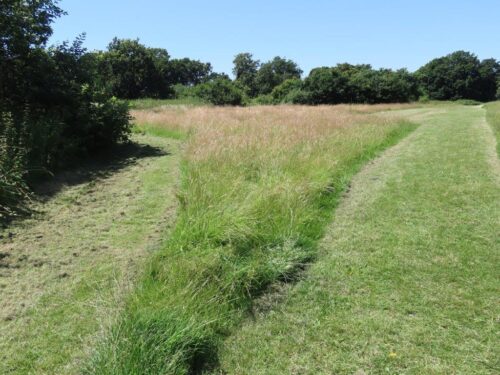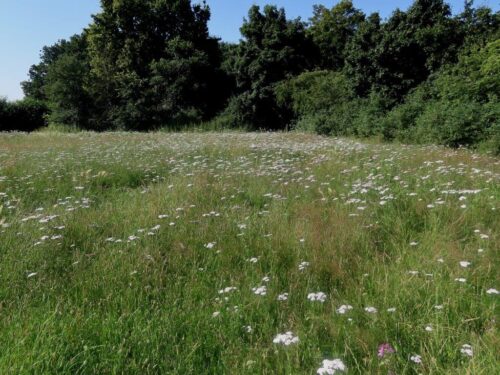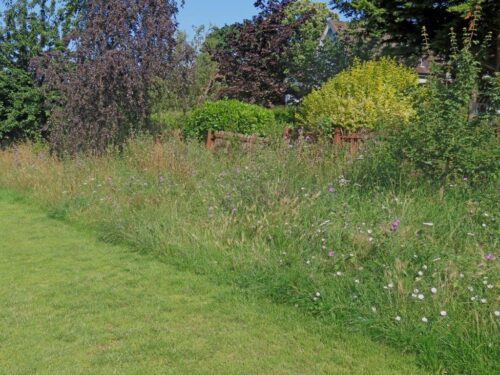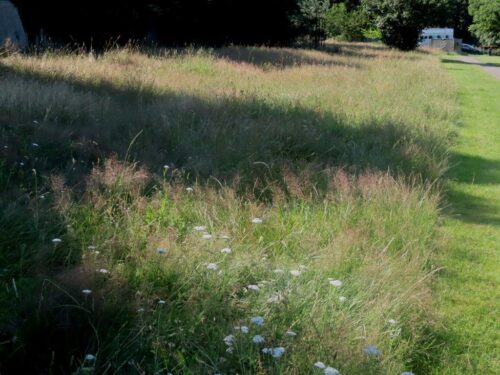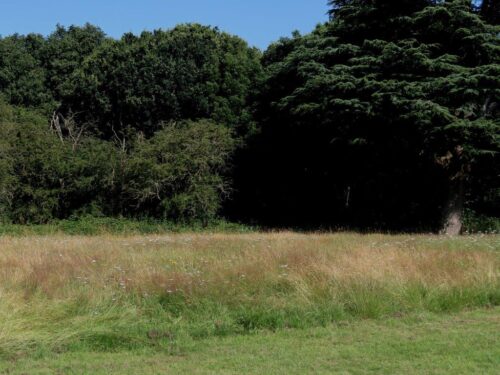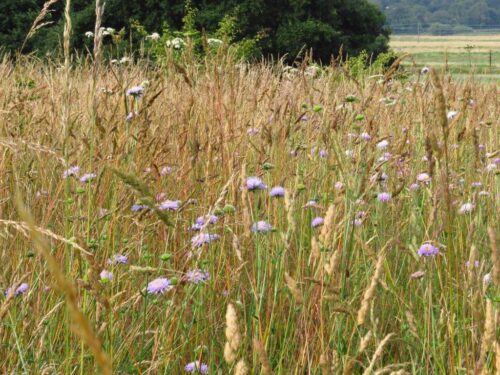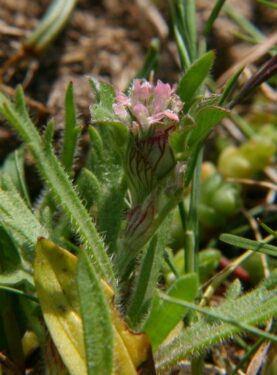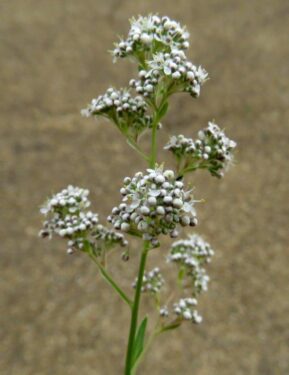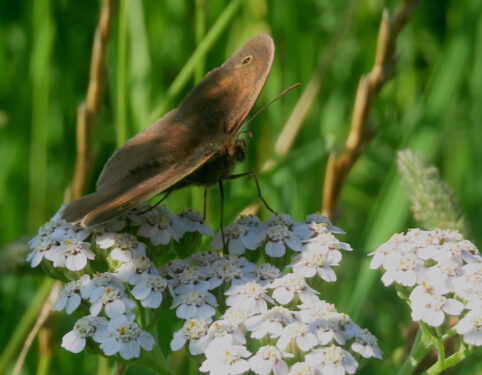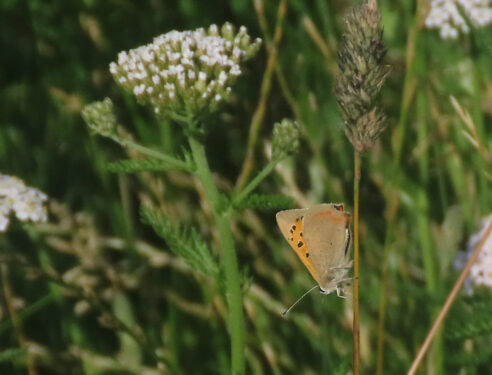#WildWivenhoe just got a lot wilder. This spring saw the start of an exciting experiment in urban rewilding, to allow the grasslands of some of our recreation areas and estate road verges to grow and flower under an autumn-cut hay regime. Spearheaded by Wivenhoe Town Council, with Mark Halladay, Cllr Glyn Evans and a band of enthusiastic volunteers. this excellent initiative importantly encompasses grassland that is managed by other bodies, notably Colchester Borough Council.
Four months down the line since the first non-cut, we visited many of the areas in high summer to see how they are coming along. This is not a scientific survey by any means – the volunteers are doing that – but more of an ecological overview to see how they are developing as a resource for wildlife, and a visual feature hopefully enhancing the day-to-day life of the whole community.
Of course some are more successful than others. Take the smallest, the Co-op Triangle: this is heavily trampled, used as an outdoor sales area, and subject to frequent ‘inputs’ – the abundance of Wall Barley and Common Mallow is very typical of the ‘dog-wee grass community’.
But it is still important. Wildlife is there, a mini-wilderness ekeing out a living surrounded by concrete; green is coming up and flowering in peoples’ lives; and importantly, people are using it – the other aspects of the junction have show gardens, admittedly beautiful and wildlife-friendly, but most definitely ‘look, don’t touch’.
All the estate verges in this scheme similarly have wildlife bursting through the previously over-manicured grassland, nature improvement areas which challenge the British obsession with sterile green grass, scalped to within a sliver of its life, and unsullied by ‘weeds’ (aka beautiful wild flowers that support all sorts of insect life), for example:
Frances, Grasby and Cracknell Closes
Ernest Road
and De Vere Lane.
All have colour and wildlife; all could be seem by some to be ‘untidy: these spots will be the test of public acceptability. Or perhaps seen as Natures’s advertisement for the rewards of letting life into our lives, and create the demand for more and more each year…
In the the larger, off-road areas, those rewards are even more apparent, teeming with butterflies, damselflies, hoverflies and all manner of insects. Off Bobbits Way, the steeply sloping grassy enclave has shown us why it escaped the houses when the estate was developed…it has sprung a spring, presumably where the gravel cap meets the London Clay, and formed a perfect rush-filled mini-marsh. Last year with so much less rain, this was not at all obvious.
Nearby, Millfield Common is large enough to be divided into two, one to be hay mown, the other periodically mown through the summer but not as tightly as in the past. And that diversity of management is paying off – the mown area with numerous flowering yellow composites, the hay area white with Yarrow, and all attracting insects.
On the very top of the Essex Alps, sandy grassland predominates, and nowhere better than at the Henrietta Close Recreation Ground. Last year, with Covid disruption to the mowing, we got a hint of its potential; this year it is simply stunning, a mosaic of grass and flowers, adorned with insects, and with access paths mown through it for those who don’t wish to explore the delights of the wild between their toes.
Finally we come to the King George V field. The fringes of the field have now largely been adopted into a hay regime, and they are all looking good…
… although not (yet) perhaps as good as our previous rewilding experiment further down the field. That has had three more years to develop, and is now entrenched as a key part of Wivenhoe’s biodiversity, a place for plants, insects and people, where the key message is ‘Please do NOT keep off the grass’.
And in the fullness of time, surely each of these has the potential to match the insect haven the other side of Wivenhoe Wood: Lower Lodge. This has had a 15 year head start on the rest, but is a fantastic example of how, if management constraints are lifted, the wildlife will respond, and we all will benefit.
This is not about rarities. Note that I haven’t even mentioned most of the species in and around these grassy patches. Yes, some scarce plants have indeed responded to the new management regime, with some areas hosting for example Knotted Clover and Dittander.
No, it is not about rarity, it is about bioabundance. Each of the flowers in the photos above, indeed each of the flowers that has graced these areas over the summer has the power to bring joy into the heart. Every single one attracts insects, the tiny things that run the planet. Quite apart from what they do for pollination, all are also food for something else. Such bioabundance builds up food webs and resilient ecosystems: bit by bit, step by step, what we do in Wivenhoe and elsewhere will help change the world for the better.
Thanks to Mark and everyone else involved for pointing and persuading us in the right direction….
